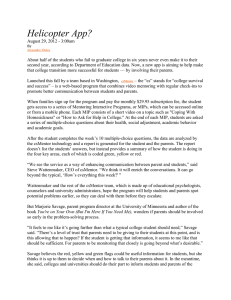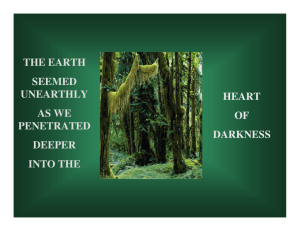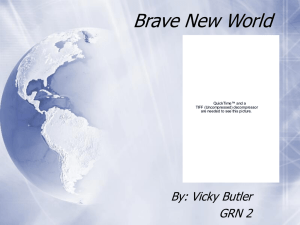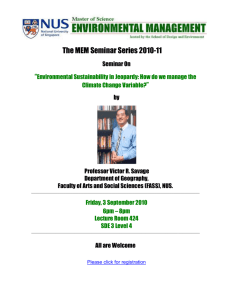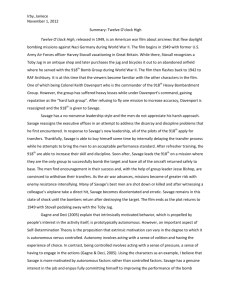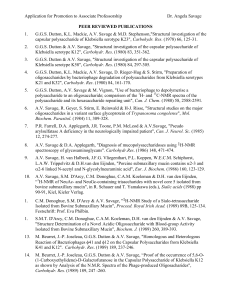Go Up, Young Man
advertisement
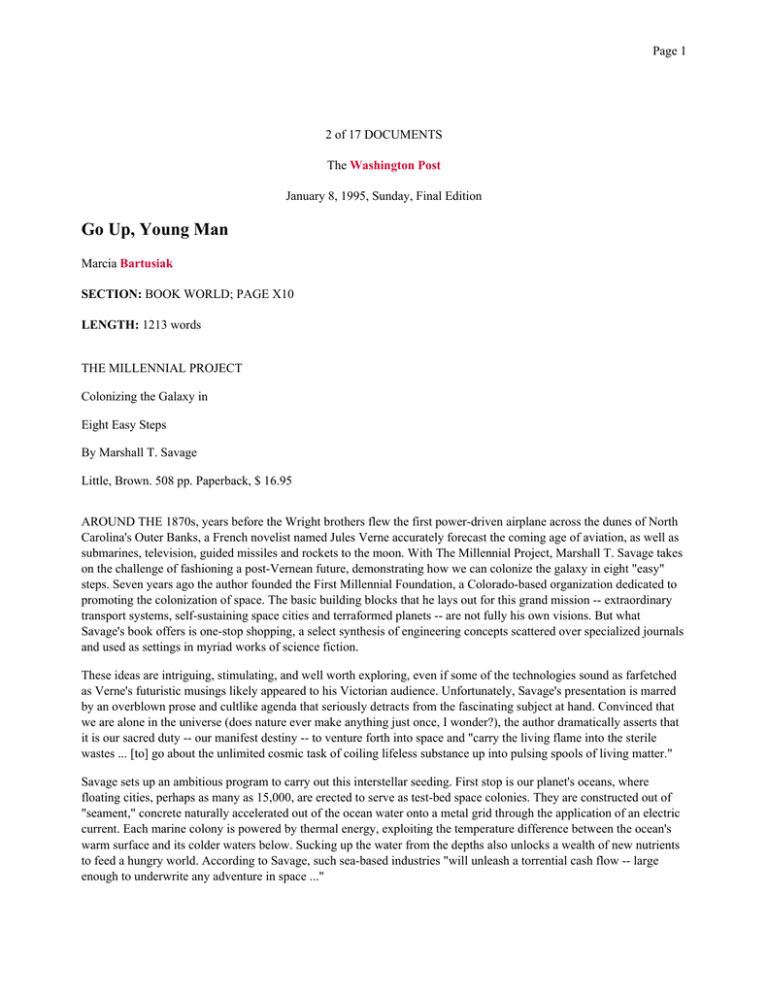
Page 1 2 of 17 DOCUMENTS The Washington Post January 8, 1995, Sunday, Final Edition Go Up, Young Man Marcia Bartusiak SECTION: BOOK WORLD; PAGE X10 LENGTH: 1213 words THE MILLENNIAL PROJECT Colonizing the Galaxy in Eight Easy Steps By Marshall T. Savage Little, Brown. 508 pp. Paperback, $ 16.95 AROUND THE 1870s, years before the Wright brothers flew the first power-driven airplane across the dunes of North Carolina's Outer Banks, a French novelist named Jules Verne accurately forecast the coming age of aviation, as well as submarines, television, guided missiles and rockets to the moon. With The Millennial Project, Marshall T. Savage takes on the challenge of fashioning a post-Vernean future, demonstrating how we can colonize the galaxy in eight "easy" steps. Seven years ago the author founded the First Millennial Foundation, a Colorado-based organization dedicated to promoting the colonization of space. The basic building blocks that he lays out for this grand mission -- extraordinary transport systems, self-sustaining space cities and terraformed planets -- are not fully his own visions. But what Savage's book offers is one-stop shopping, a select synthesis of engineering concepts scattered over specialized journals and used as settings in myriad works of science fiction. These ideas are intriguing, stimulating, and well worth exploring, even if some of the technologies sound as farfetched as Verne's futuristic musings likely appeared to his Victorian audience. Unfortunately, Savage's presentation is marred by an overblown prose and cultlike agenda that seriously detracts from the fascinating subject at hand. Convinced that we are alone in the universe (does nature ever make anything just once, I wonder?), the author dramatically asserts that it is our sacred duty -- our manifest destiny -- to venture forth into space and "carry the living flame into the sterile wastes ... [to] go about the unlimited cosmic task of coiling lifeless substance up into pulsing spools of living matter." Savage sets up an ambitious program to carry out this interstellar seeding. First stop is our planet's oceans, where floating cities, perhaps as many as 15,000, are erected to serve as test-bed space colonies. They are constructed out of "seament," concrete naturally accelerated out of the ocean water onto a metal grid through the application of an electric current. Each marine colony is powered by thermal energy, exploiting the temperature difference between the ocean's warm surface and its colder waters below. Sucking up the water from the depths also unlocks a wealth of new nutrients to feed a hungry world. According to Savage, such sea-based industries "will unleash a torrential cash flow -- large enough to underwrite any adventure in space ..." Page 2 Go Up, Young Man The Washington Post January 8, 1995, Sunday, Final Edition Persuading us that standard rockets would not be cost-effective in handling large migrations into space, the author recommends a more exotic launch system: capsules accelerated, like particles in an atom smasher, along superconducting tracks that shoot up and out through mountaintops. Once spaceborne, these vehicles are further boosted with beams of energy from an orbiting laser array. Travelers are taken to their choice of "ecospheres," space-based habitats designed as nested balloons, complete with hanging gardens and free-floating trees. Weightlessness, in fact, will be the norm, a veritable fountain of youth since gravity is no longer tugging on our bodies. The moon serves as the supply house of raw materials for these space colonies and is itself quickly dotted over with domed villages. All of this activity, however, is a mere prelude to humanity's greatest engineering feat: transforming Mars into an Earthlike planet. To do this, carbon dioxide is released from Mars's dry-ice polar caps; water vapor, the most necessary ingredient, arrives by gently nudging a passing comet onto a collision course with the Martian surface. With an enriched atmosphere in place, Mars can then warm up to temperatures above freezing, releasing underground reservoirs of water that form vast rivers and seas. Once life is teeming on Mars, humanity expands in earnest throughout the solar system, particularly into the asteroid belt, where space-age miners set up fiefdoms on their personally owned rocks. Savage predicts that the solar system could boast a population of 330 trillion by the year 2500. The Oort cloud, a region of cometary debris surrounding our solar system, serves as a set of stepping- stones across the interstellar void to the nearest stars. Hopping from remnant to remnant, we percolate outward. Later we are assisted by radically new transport systems, such as antimatter engines that propel us to velocities approaching the speed of light. In this way, says Savage, humankind can spread over the entire Milky Way within 700,000 years. If Savage had remained focused on these imaginative scenarios, The Millennial Project would have been a fine work, an engaging guidebook to the stars. I could even have overlooked the outrageously low cost estimates he places on some of the projects. But his storyline is disrupted by a naive (and disturbing) philosophic thread that is likely to alienate the very audience he seeks to inspire: As we tear away from Earth, writes Savage, we will have to tear up our anachronistic social systems as well. According to the author, the new order should be established as a pure democracy, "a plexus of interconnected harmonic minds." Advanced telecommunications networks, a sort of cosmic Internet that links the ever-expanding sprawl of humanity, would make it possible for "each person to function as his own legislator." Out of this electronic chaos, contends Savage, decisions will emerge, as each group of free individuals "pulses in synchrony." "The populace," he writes, "will rapidly begin to recognize certain speakers as being people with clear heads, persuasive tongues, and good ideas ... These people, without being elected or appointed ... will evolve into leaders." I am somehow reminded of George Orwell's Animal Farm, where all animals are created equal, but some are more equal than others. SAVAGE FALLS into the trap of many utopia builders: the belief that moving a select breed of humans (in The Millennial Project they are racially diverse but decidedly white-collar) to a new environment will magically permit society to shed most of its ills. Savage dismisses too much the human variable in his simplistic analysis; such mortal foibles as the lust for power and our tendency to compete fiercely for resources will surely migrate into the vacuum of space. He should take a hard look at the troubled Biosphere project, the prototype space colony situated in the Arizona desert. Founded by like-minded professionals, it was awash in charges of mismanagement, waste and sabotage within a few years. "What happens next is entirely up to you," implores the author. "An infinity of space awaits, hushed, afraid even to breathe, anticipating the next, the crucial moment -- your decision." I vote a firm no to Savage's organizational blueprint, but a resounding yes to the dream. The urge to explore is one of Homo sapiens's defining characteristics. We are a curious species, and the universe awaits us. Page 3 Go Up, Young Man The Washington Post January 8, 1995, Sunday, Final Edition Marcia Bartusiak, author of "Thursday's Universe" and "Through a Universe Darkly," is a Knight Fellow at the Massachusetts Institute of Technology. LOAD-DATE: January 8, 1995 LANGUAGE: ENGLISH SERIES: Occasional GRAPHIC: ILLUSTRATION, SINGLE-FAMILY LUNAR ECOSPHERE TYPE: REVIEW Copyright 1995 The Washington Post
